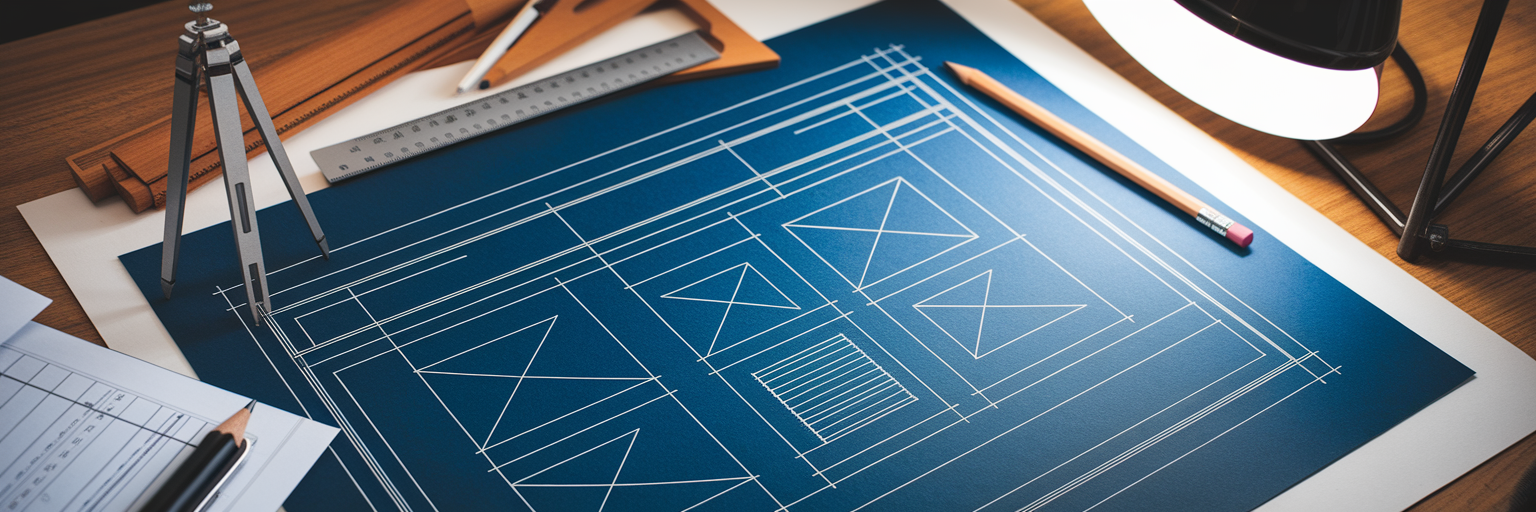How to Analyze Website Designs Like a Pro
Learn a structured framework to evaluate website designs. This guide covers analyzing fonts, colors, layouts, and user experience with practical tools.
November 29, 2025

Ivan S
Founder @bookmarkify

Learn a structured framework to evaluate website designs. This guide covers analyzing fonts, colors, layouts, and user experience with practical tools.
November 29, 2025

Ivan S
Founder @bookmarkify

We’ve all been there. Staring at a website, the first thought is often a simple "I like this" or "I don't." But as a designer or developer, moving past that gut reaction is essential. A professional web design critique isn't about personal taste. It’s a structured analysis grounded in proven principles. Learning how to analyze website designs effectively means you can articulate exactly why a design works or where it falls short.
This guide provides a framework built on three core pillars: the site's visual language (fonts and colors), its structure (layout and hierarchy), and its usability (the user experience). Following this roadmap will help you deconstruct any design with confidence.
A great first step is to start your own curated gallery of inspiration. When you find a site that resonates, save it to your personal collection. Building a library of examples, like the ones in our curated inspiration gallery, helps train your eye to spot effective patterns and techniques.
A website's typography and color palette are its voice and mood. They aren't just decorative choices. They communicate personality and guide user perception before a single word is read. When it comes to choosing website fonts and colors, every decision carries weight. Fonts, for instance, set the tone. A traditional serif font can convey trust and authority, while a clean sans-serif feels modern and approachable.
The way a font is used—its weight, spacing, and size—also dramatically affects readability and character. Similarly, a color palette is a powerful tool for influencing emotion and directing attention. A well-chosen scheme creates harmony, while high-contrast colors for calls-to-action make them pop, improving both impact and accessibility for users with visual impairments.
Here’s a practical tip: next time you’re on a site you admire, right-click and select "Inspect." In the developer tools panel, you can explore the CSS to find the exact font families and color hex codes being used. As you discover font pairings and color schemes you love, save the URL or a screenshot to a dedicated board in your bookmark manager to build a reference library for future projects.
| Font Type | Common Personality Traits | Typical Use Cases |
|---|---|---|
| Serif | Traditional, Trustworthy, Formal | Law firms, financial institutions, newspapers |
| Sans-Serif | Modern, Clean, Approachable | Tech startups, minimalist brands, digital agencies |
| Script | Elegant, Personal, Creative | Wedding invitations, luxury brands, artisan shops |
| Display | Bold, Expressive, Unique | Headlines, logos, promotional materials |

Beyond the surface-level visuals lies the website's architecture. A successful website layout analysis focuses on how content is organized and presented to guide the user's journey. Think of a website like a newspaper's front page. The most important headline is the largest and boldest, immediately drawing your eye. This is visual hierarchy in action. Designers use size, color, contrast, and placement to signal importance and create a clear path for users to follow.
This structure is often built on a grid system. Grids bring order and consistency to a layout, making the user experience predictable and comfortable. Just as important is what you don't see: white space. This negative space isn't empty. It's an active element that reduces cognitive load, separates content blocks, and improves focus on key information.
Of course, no modern design analysis is complete without considering mobile responsiveness. As a recent Statista report confirms, with over half of global website traffic coming from mobile phones, a fluid design is non-negotiable. A layout that shines on a desktop but breaks on a smartphone is a failed design. You can easily test this yourself. Use your browser's responsive design mode (often found in the developer tools) to see how a site adapts to different screen sizes. It’s a quick, hands-on way to see if the layout is truly flexible. For more tips on design principles, check out other articles on our blog.
User Experience (UX) is all about how easy and enjoyable a website is to use. It’s the feeling a person gets when interacting with your site. When you evaluate website user experience, you're moving beyond how it looks and focusing on how it works and feels from a user's perspective. A great design is one that feels intuitive and frictionless.
To conduct a thorough analysis, check for these core components:
Here’s a powerful technique you can use right now: the "5-Second Test." Load a website's homepage, look at it for just five seconds, and then close it. Write down everything you can remember. This simple exercise quickly reveals if the site’s core message and value proposition are immediately clear. Keeping track of these findings is key. A well-organized bookmarking tool like Bookmarkify can help you save notes and screenshots from your UX tests, creating a powerful knowledge base for your projects.

A good web design critique is supported by the right tools. Having a go-to toolkit helps you move from observation to data-driven analysis. Here are a few essentials to get you started:
This data-driven approach is not just a trend. It's based on foundational principles established by industry leaders. For instance, the Nielsen Norman Group provides usability heuristics that have guided UX professionals for decades. Grounding your analysis in these principles adds weight to your critiques. For those ready to invest in a more streamlined workflow, our premium plans offer advanced features for organizing your research.
A professional website design analysis is a skill built on a simple formula: combining visuals (fonts and colors), structure (layout and hierarchy), and usability (UX). The goal isn't just to find flaws but to develop a designer's eye and build an intuition for what makes a digital experience successful. The more you practice, the more natural it becomes.
Start today. The next time a website impresses you, don't just admire it. Save it, tag it, and make notes on why it works. Using a tool like Bookmarkify to organize your design pages is the perfect way to build a library you can turn to for inspiration on your next project.